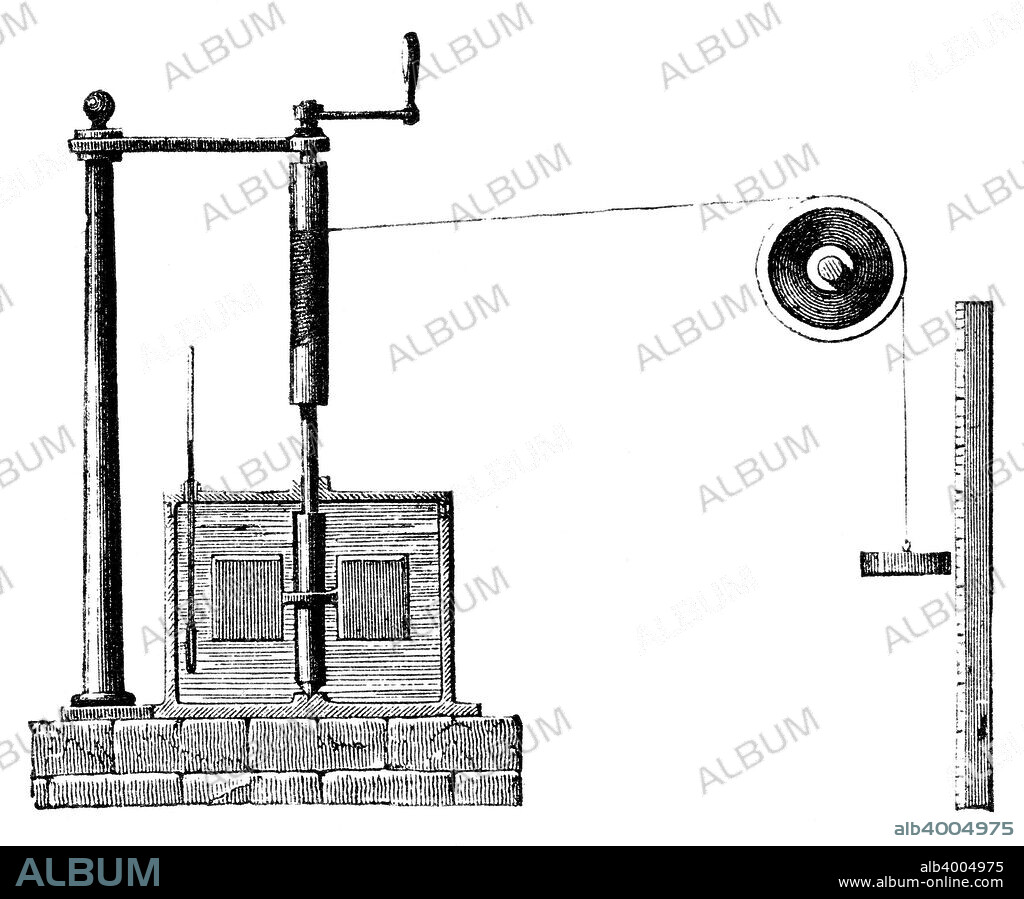alb4004975
Joule's apparatus for determining the mechanical equivalent of heat, 1872. Artist: Unknown

|
Ajouter à une autre Lightbox |
|
Ajouter à une autre Lightbox |



Avez-vous déjà un compte? S'identifier
Vous n'avez pas de compte ? S'inscrire
Acheter cette image.
Sélectionnez l'usage:

Titre:
Joule's apparatus for determining the mechanical equivalent of heat, 1872. Artist: Unknown
Légende:
Voir la traduction automatique
Joule's apparatus for determining the mechanical equivalent of heat, 1872. A vessel of water, oil or mercury encloses vanes attached to a spindle. Cord is wound round the cylinder and drum. The weight descending against the scale rotates the spindle and vanes. Raising and lowering the weight raises the temperature of the fluid. From the rise in temperature and the distance travelled, the energy used can be calculated. British physicist James Prescott Joule (1818-1889) determined the mechanical equivalent of heat. The unit of energy called the joule is named after him.
Crédit:
Album / Oxford Science Archive / Heritage Images
Autorisations:
Modèle: Non - Propriété: Non
Questions sur les droits?
Questions sur les droits?
Taille de l'image:
3573 x 2953 px | 30.2 MB
Taille d'impression:
30.3 x 25.0 cm | 11.9 x 9.8 in (300 dpi)
Mots clés:
 Pinterest
Pinterest Twitter
Twitter Facebook
Facebook Copier le lien
Copier le lien Email
Email
